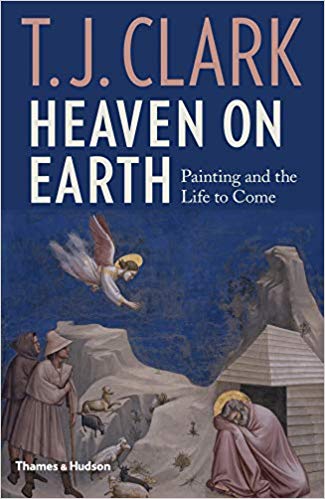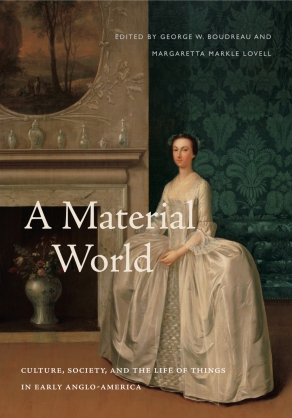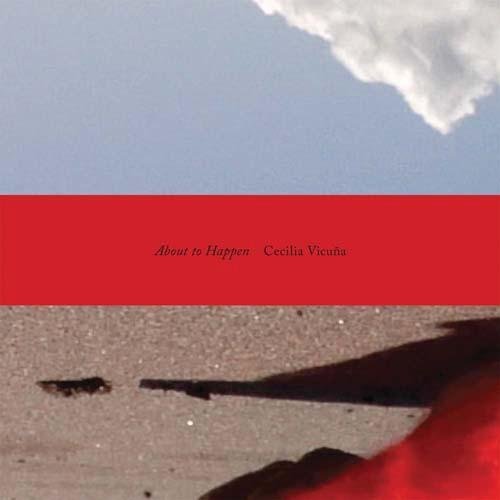Tag: faculty publications
Two New Art Practice Faculty Publications
Available now in the Berkeley Library – two new publications by Art Practice faculty members, Kenyatta A.C. Hinkle and Anne Walsh.
Sir, by Kenyatta A.C. Hinkle

From the publisher website, Litmus Press:
“SIR is based upon the conceptual premise of a name that undefines the defined. Hinkle meditates on historical perceptions of the black male body and its contextualizing geographies in relationship to her brother, an African-American man born in 1980 named Sir. SIR interrogates naming in the African Diaspora to examine collective historical trauma, transgressive perceptions of the black male body, forms of gendering, and familial modes of survival within a hostile geography.”
Hello Leonora, Soy Anne Walsh, by Anne Walsh, with contributions by Julia Bryan-Wilson
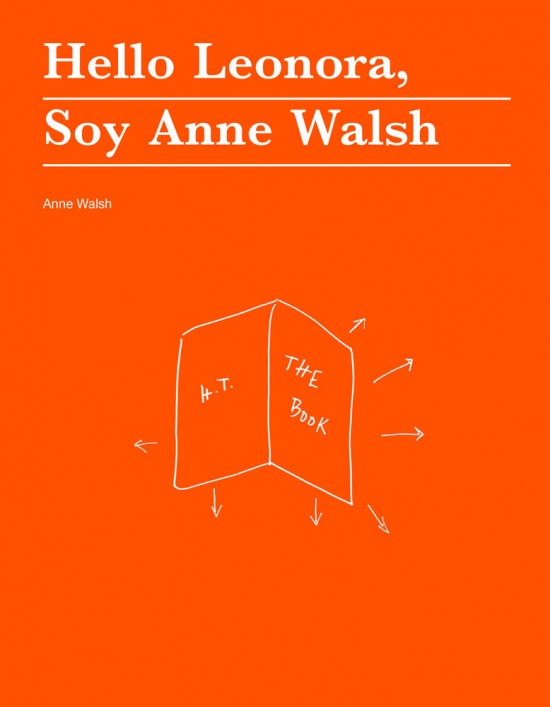
From the publisher website, MIT press:
“Over the past decade, artist Anne Walsh has created an ongoing, multipart response to surrealist painter Leonora Carrington’s novel The Hearing Trumpet (written in the early 1960s, published in 1974). Walsh’s interdisciplinary works, encompassing video, writing, and performance, chronicle her time with the nonagenarian author and, ultimately, her assumption of the identity of the aging artist. Hello Leonora, Soy Anne Walsh is a visual and written “adaptation” of Carrington’s feminist novella, offering a narrative in fragments: a middle-aged artist named Anne Walsh falls in love with the 92-year-old author of a book about a 92-year-old woman who is placed in a sinister and increasingly surreal retirement home.
Walsh courts the author, travels to Mexico to meet her, fantasizes about adapting the book for film, and spends the next decade searching for The Hearing Trumpet‘s form and cast. Having discovered in Carrington’s novel a thrilling, subversive example of old age, Walsh casts herself as an “Apprentice Crone.” She stalks old people and takes selfies with them. She becomes a mother, passes through menopause. She sings her daughter’s Disney movie songs at “elder theater” classes. She studies and rehearses the trauma, the affliction, the indignity that is old age, and she writes to Leonora Carrington.
The story is told through facsimiles of hand-written letters, annotated research notes, post-it note flow charts, cast lists, scripts, and a photographic essay that loosely narrates Walsh’s visits to Carrington in Mexico City, with additional texts by writer Dodie Bellamy, art historian Julia Bryan-Wilson, and poet and critic Claudia La Rocco.”
Anne Walsh will be celebrating the publication of her book on Wednesday October 23 at 7 p.m. at East Bay Booksellers (formerly Diesel Books), and she will be featured at a Berkeley Book Chat event hosted by the Townsend Center for the Humanities, Wednesday, Nov 13, 2019 | 12:00 pm to 1:00 pm, Geballe Room, 220 Stephens Hall
Two New Titles from Professor Sugata Ray
Two new books are available from History of Art Professor Sugata Ray.
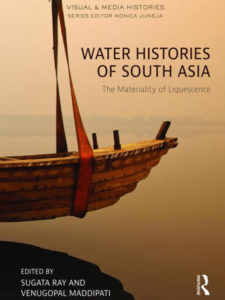
Water Histories of South Asia: The Materiality of Liquescence
Edited by Sugata Ray, Venugopal Maddipati
From the Routledge website:
“This book surveys the intersections between water systems and the phenomenology of visual cultures in early modern, colonial and contemporary South Asia. Bringing together contributions by eminent artists, architects, curators and scholars who explore the connections between the environmental and the cultural, the volume situates water in an expansive relational domain. It covers disciplines as diverse as literary studies, environmental humanities, sustainable design, urban planning and media studies. The chapters explore the ways in which material cultures of water generate technological and aesthetic acts of envisioning geographies, and make an intervention within political, social and cultural discourses. A critical interjection in the sociologies of water in the subcontinent, the book brings art history into conversation with current debates on climate change by examining water’s artistic, architectural, engineering, religious, scientific and environmental facets from the 16th century to the present.
This is one of the first books on South Asia’s art, architecture and visual history to interweave the ecological with the aesthetic under the emerging field of eco art history. The volume will be of interest to scholars and general readers of art history, Islamic studies, South Asian studies, urban studies, architecture, geography, history and environmental studies. It will also appeal to activists, curators, art critics and those interested in water management.”
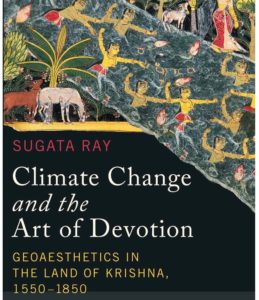
Climate Change and the Art of Devotion: Geoaesthetics in the Land of Krishna, 1550-1850
By Sugata Ray
From the University of Washington Press website:
“In the enchanted world of Braj, the primary pilgrimage center in north India for worshippers of Krishna, each stone, river, and tree is considered sacred. In Climate Change and the Art of Devotion, Sugata Ray shows how this place-centered theology emerged in the wake of the Little Ice Age (ca. 1550–1850), an epoch marked by climatic catastrophes across the globe. Using the frame of geoaesthetics, he compares early modern conceptions of the environment and current assumptions about nature and culture.
A groundbreaking contribution to the emerging field of eco–art history, the book examines architecture, paintings, photography, and prints created in Braj alongside theological treatises and devotional poetry to foreground seepages between the natural ecosystem and cultural production. The paintings of deified rivers, temples that emulate fragrant groves, and talismanic bleeding rocks that Ray discusses will captivate readers interested in environmental humanities and South Asian art history.”
Professor Emeritus T.J. Clark’s “Heaven on Earth: Painting and the Life to Come”
The latest publication from Modern Art Professor Emeritus T.J. Clark is now available to check out from the Main Stacks in Doe Memorial Library.
From the Thames & Hudson website:
“The idea of heaven on earth haunts the human imagination. The day will come, say believers, when the pain and confusion of mortal life will give way to a transfigured community. Such a vision of the world seems indelible. Even politics, some reckon, has not escaped from the realm of the sacred: its dreams of the future still borrow their imagery from the prophets. In Heaven on Earth, T. J. Clark sets out to investigate the very different ways painting has given form to the dream of God’s kingdom come. He goes back to the late Middle Ages and Renaissance – to Giotto in Padua, Bruegel facing the horrors of religious war, Poussin painting the Sacraments, Veronese unfolding the human comedy. Was it to painting’s advantage, is Clark’s question, that in an age of enforced orthodoxy (threats of hellfire, burnings at the stake) artists could reflect on the powers and limitations of religion without putting their thoughts into words?
At the heart of the book stands Bruegel’s ironic but tender picture of The Land of Cockaigne, but also Veronese’s inscrutable Allegory of Love. The story ends with Picasso’s Fall of Icarus, made for UNESCO in 1958, which already seems to signal – perhaps to prescribe – an age when all futures are dead.”
Professor Margaretta Lovel’s “A Material World”
Read the new publication, edited by Professor Margaretta Lovel, Jay D. McEvoy Chair in the History of American Art, available for check out from the Art History / Classics Library and the Main Stacks.
(From the Penn State University Press Website.)
A Material World
Culture, Society, and the Life of Things in Early Anglo-America
Edited by George W. Boudreau, and Margaretta M. Lovell
“A vibrant compendium of essays that gives a master class in object analysis and shatters old categories of material and visual culture. Together, the authors powerfully demonstrate the global movement of commodities, the sometimes numinous power of memory objects, and the closely calibrated and negotiated human indications of wealth and power in early America. Historians of all stripes should pay attention to their clarion call to look deeply and think broadly.”
—Ann Smart Martin, author of Buying into the World of Goods: Early Consumers in Backcountry Virginia
(From the Penn State University Press Website.)
Julia Bryan-Wilson’s “Fray: Art and Textile Politics” Awarded ASAP Book Prize
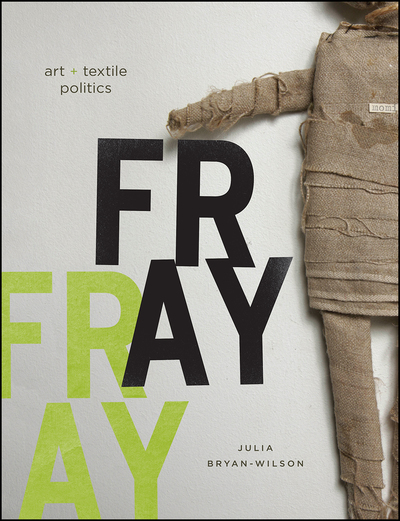
Doris and Clarence Malo Professor of Modern and Contemporary Art Julia Bryan-Wilson has been awarded the 2018 Book Prize from the Association for the Study of Arts of the Present (ASAP) for her book FRAY: Art and Textile Politics.
From the ASAP website:
“Congratulations to Professor Julia Bryan-Wilson for winning the prize for Fray: Art + Textile Politics. Amongst a very strong short list, the book prize committee recognized Fray for its inspiring mix of methodological innovation, sense of feminist and social engagement, and amazing re-articulation of contemporary art history around the material practices of textile art and craft in the United States and Chile from the 1970s to the present. Fray is a book that traces not only the emergence of an increasingly prominent artistic mode out of various craft and labor practices, but also shows how artists working with textiles–mainly women but also others operating on the margins of both the economy and the art-market–developed new material forms of expression and protest out of some of the most ancient technologies at our disposal as human beings–braiding, weaving, tying knots. Bryan-Wilson’s case studies explore the work of feminist knitting collectives, Chilean activists, emerging queer artists, and the vast numbers who contributed to the AIDS quilt. This is a book that provides a scrupulous examination of contemporary culture from the perspective of a medium whose materiality and immersion in bodily, physical labor challenge many of the stories we tell ourselves about art in an age of digital innovation and conceptual self-consciousness. At the same time, Fray assembles a picture of hemispheric contemporary art that offers scholars and critics in all the fields and area that ASAP embraces a chance to consider how female labor is valued, recognized, exploited, and made invisible. Bryan-Wilson’s work promises to change how scholars in various fields pay attention to craft-making practices and their representations in art, drama, literature, and everyday life.”
“Cecilia Vicuña: About to Happen” at BAMPFA Co-Curated by Professor Julia Bryan-Wilson
History of Art Department Professor Julia Bryan-Wilson is co-curator of the exhibit, Cecilia Vicuña: About to Happen, currently on at the Berkeley Art Museum and Pacific Film Archive until October 14, 2018.
Join exhibition co-curators Andrea Andersson, chief curator of the visual arts at the Contemporary Arts Center, New Orleans, and Professor Julia Bryan-Wilson, for a discussion of Cecilia Vicuña’s work on July 11 at 6:00 at BAMPFA.
About to Happen / Cecilia Vicuña
ISBN: 9781938221156
From the publisher website, Siglio Press:
“Beginning and ending at the edge of the ocean at the sacred mouth of the Aconcagua River, About to Happen serves as a lament as well as love letter to the sea. In this artist’s book, Chilean-born artist and poet Cecilia Vicuña weaves personal and ancestral memory while summoning the collective power to confront the economic disparities and environmental crises of the 21st century.
Collecting the detritus that washes up on shore, Vicuña assembles out of the refuse tiny precarios and basuritas—little sculptures held together with nothing more than string and wire, which she sometimes makes as offerings to be reclaimed by the sea. These acts of creation and erasure mirror the ways in which her work inhabits and enlivens the liminal spaces between the remembered and forgotten, the revered and the discarded, the material and the dematerialized.
About to Happen, which accompanies an exhibition at the Contemporary Arts Center, New Orleans, and the Berkeley Art Museum, traces a decades-long practice that has refused categorical distinctions and thrived within the confluences of conceptual art, land art, feminist art, performance and poetry. Vicuña’s nuanced visual poetics—operating fluidly between concept and craft, text and textile—transforms the discarded into the elemental, paying acute attention to the displaced, the marginalized and the forgotten.
Cecilia Vicuña (b. 1948, Santiago, Chile) is a poet, visual and performance artist, and filmmaker whose multi-disciplinary and multi-dimensional works bridge art and life, the ancestral and the avant-garde. Vicuña’s work emphasizes transformative acts and “metaphors in space”: an image becomes a poem, a film, a song, a sculpture or a collective performance. Beginning often with a delicate line (drawn or written) or a piece of string, she weaves complex works that are rich with political and social awareness as well as aesthetic beauty.”
Professor Julia Bryan-Wilson receives the 2018 Robert Motherwell Book Award

FRAY: Art and Textile Politics
Julia Bryan-Wilson
The University of Chicago Press
2018 Robert Motherwell Book Award Winner
Julia Bryan-Wilson has been awarded the 2018 Robert Motherwell Book Award for her book FRAY: Art and Textile Politics (The University of Chicago Press). The award carries a prize of $10,000.
The jury for the award was Susan Davidson (Robert Rauschenberg Foundation), James Leggio (Brooklyn Museum), and Katy Siegel (The Baltimore museum of Art/Stony Brook University).
Closely examining how amateurs and fine artists in the United States and Chile turned to sewing, braiding, knotting, and quilting amid the rise of global manufacturing, Julia Bryan-Wilson’s FRAY: Art and Textile Politics argues that textiles unravel the high/low divide and urges us to think flexibly about what the politics of textiles might be. Her case studies from the 1970s through the 1990s—including the improvised costumes of the theater troupe the Cockettes, the braided rag rugs of US artist Harmony Hammond, the thread-based sculptures of Chilean artist Cecilia Vicuña, the small hand-sewn tapestries depicting Pinochet’s torture, and the NAMES Project AIDS Memorial Quilt—are often taken as evidence of the inherently progressive nature of handcrafted textiles. Fray, however, shows that such methods are recruited to often ambivalent ends, leaving textiles very much “in the fray” of debates about feminized labor, protest cultures, and queer identities; the malleability of cloth and fiber means that textiles can be activated, or stretched, in many ideological directions. The first contemporary art history book to discuss both fine art and amateur registers of handmaking at such an expansive scale, Fray unveils crucial insights into how textiles inhabit the broad space between artistic and political poles—high and low, untrained and highly skilled, conformist and disobedient, craft and art.
Julia Bryan-Wilson is Professor of Modern and Contemporary Art at the University of California, Berkeley; she is also the Director of the Berkeley Arts Research Center. She is the author of Art Workers: Radical Practice in the Vietnam War Era (California, 2009); and Art in the Making: Artists and Their Materials from the Studio to Crowdsourcing (with Glenn Adamson, Thames & Hudson, 2016). With Andrea Andersson, she curated the exhibition Cecilia Vicuña: About to Happen.
Image and text from dedalusfoundation.org
New Publication by Assistant Professor Anneka Lenssen: Modern Art in the Arab World: Primary Documents
History of Art department Assistant Professor Anneka Lenssen has published Modern Art in the Arab World: Primary Documents with co-editors Sarah Rodgers and Nada Shabout.
See Professor Lenssen speak about her new book at NY MoMA on May 23, 6:00-8:00. In conversation with Anneka Lenssen, Sarah Rogers, Nada Shabout, co-editors of the book, and Iftikhar Dadi, Cornell University, with introduction by Glenn D. Lowry, MoMA.
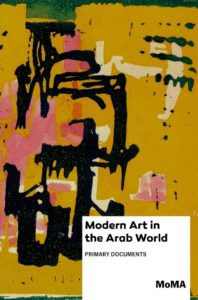
From the publisher website, Duke University Press:
“Modern Art in the Arab World: Primary Documents offers an unprecedented resource for the study of modernism: a compendium of critical art writings by twentieth-century Arab intellectuals and artists. The selection of texts—many of which appear here for the first time in English—includes manifestos, essays, transcripts of roundtable discussions, diary entries, exhibition guest-book comments, letters, and more. Traversing empires and nation-states, diasporas and speculative cultural and political federations, these documents bring light to the formation of a global modernism, through debates on originality, public space, spiritualism and art, postcolonial exhibition politics, and Arab nationalism, among many other topics. The collection is framed chronologically, and includes contextualizing commentaries to assist readers in navigating its broad geographic and historical scope. Interspersed throughout the volume are sixteen contemporary essays: writings by scholars on key terms and events as well as personal reflections by modern artists who were themselves active in the histories under consideration. A newly commissioned essay by historian and Arab-studies scholar Ussama Makdisi provides a historical overview of the region’s intertwined political and cultural developments during the twentieth century. Modern Art in the Arab World is an essential addition to the investigation of modernism and its global manifestations.”
Join Professor Julia Bryan-Wilson at her Book Launch with Trevor Paglen: April 24
Mapping as Research: Trevor Paglen in conversation with Julia Bryan-Wilson
and book launch
Tuesday, April 24 at 5:00 pm
Osher Theater, Berkeley Art Museum and Pacific Film Archive, UC Berkeley
To celebrate his first comprehensive artist monograph, Trevor Paglen (UC Berkeley Geography PhD and 2017 MacArthur “genius” fellow) will discuss his work with ARC Director Julia Bryan-Wilson. Paglen’s work relentlessly pursues what he calls the “unseeable and undocumentable” in contemporary society. Blending photography, installation, investigative journalism, and science, Paglen explores the clandestine activity of government and intelligence agencies, using high-grade equipment to document their movements and reveal their hidden inner workings. The new publication includes a survey text by Bryan-Wilson and presents over two decades of Paglen’s groundbreaking work, making visible the structures and technologies that impact our lives.
Please note: Paglen will be signing books after the discussion.
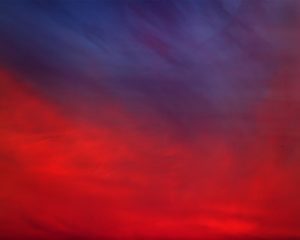
Trevor Paglen is an artist whose work spans image-making, sculpture, investigative journalism, writing, engineering, and numerous other disciplines. Among his chief concerns are learning how to see the historical moment we live in and developing the means to imagine alternative futures. Trevor Paglen’s work is included in the collections of the Metropolitan Museum of Art; the San Francisco Museum of Modern Art; the Smithsonian American Art Museum; the Whitney Museum of American Art; Berkeley Art Museum; the Solomon R. Guggenheim Museum, New York; Victoria and Albert Museum, London; and the Nevada Museum of Art. He has launched an artwork into distant orbit around Earth in collaboration with Creative Time and MIT, contributed research and cinematography to the Academy Award-winning film Citizenfour, and created a radioactive public sculpture for the exclusion zone in Fukushima, Japan. He is the author of five books and numerous articles on subjects including experimental geography, state secrecy, military symbology, photography, and visuality. Paglen’s work has been profiled in the New York Times, the New Yorker, the Economist and Art Forum. He is a 2017 recipient of the MacArthur Foundation Award.
Paglen holds a B.A. from UC Berkeley, an MFA from the Art Institute of Chicago, and a Ph.D. in Geography from UC Berkeley.
Julia Bryan-Wilson is Professor of Modern and Contemporary Art at the University of California, Berkeley. Her research interests include questions of artistic labor, feminism, queer theory, fabrication/production, performance, visual culture of the nuclear age, photography, and textile handicraft. She is the author of Art Workers: Radical Practice in the Vietnam War Era (U California Press, 2009), Art in the Making: Artists and their Materials from the Studio to Crowdsourcing (with Glenn Adamson, Thames & Hudson, 2016), and Fray: Art and Textile Politics (U Chicago, 2017). She is the editor of Robert Morris: October Files (MIT, 2013), and she has co-edited two special issues of journals: “Visual Activism” for the Journal of Visual Culture (with Jennifer González and Dominic Willsdon) and “Time Zones: Durational Art and its Contexts” for Representations (with Shannon Jackson). With Andrea Andersson, Bryan-Wilson co-curated the exhibition Cecilia Vicuña: About to Happen, which travels to the Berkeley Art Museum in fall 2018. She is currently writing a book about Louise Nevelson.
Image: Trevor Paglen, Untitled (Reaper Drone), 2010, C-Print, 48 × 60 in. (121.92 × 152.40 cm), Courtesy of the Artist, Metro Pictures New York, Altman Siegel San Francisco.
New York Times Best Art Books of 2017
Check out the titles from the New York Times list of Best Art Books of 2017! Our very own Julia Bryan-Wilson made the list with Fray: Art and Textile Politics.
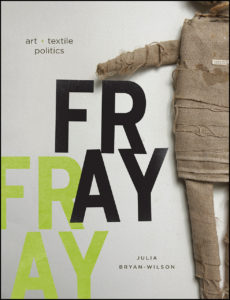
ISBN: 9780226077819
Check out some of the other highlights from the list that can be found in our library:
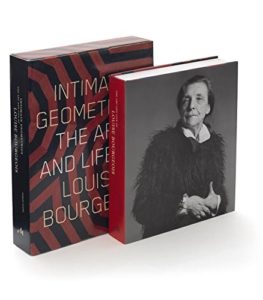
INTIMATE GEOMETRIES: THE ART AND LIFE OF LOUISE BOURGEOIS
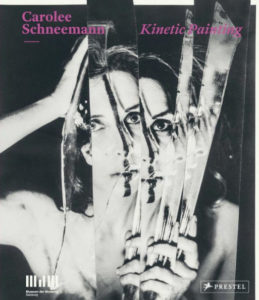
CAROLEE SCHNEEMANN: KINETIC PAINTING
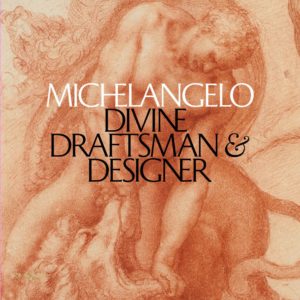
MICHELANGELO: DIVINE DRAFTSMAN AND DESIGNER
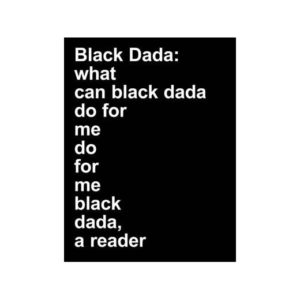
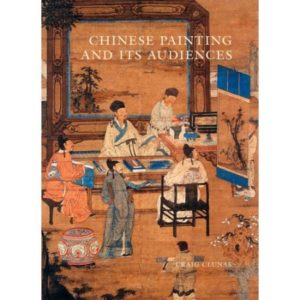
CHINESE PAINTING AND ITS AUDIENCES
